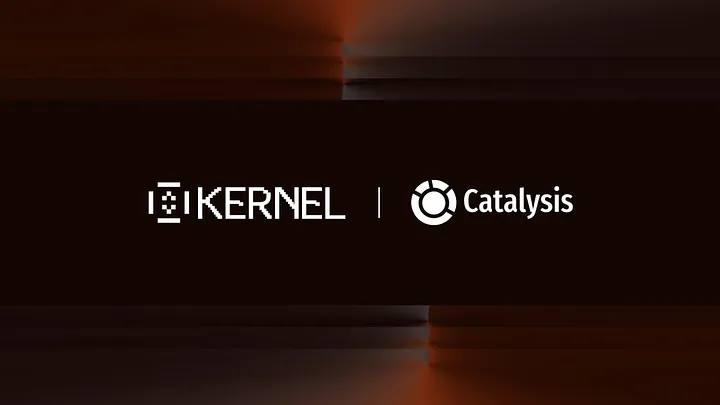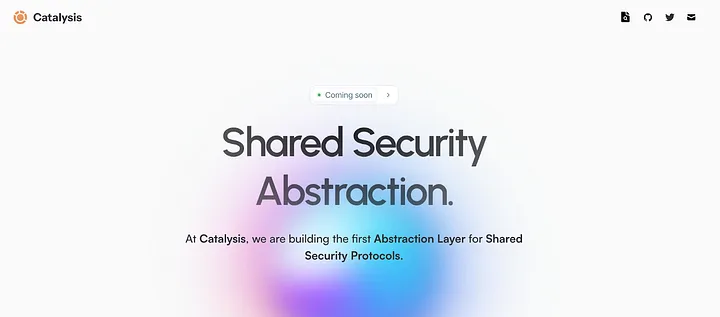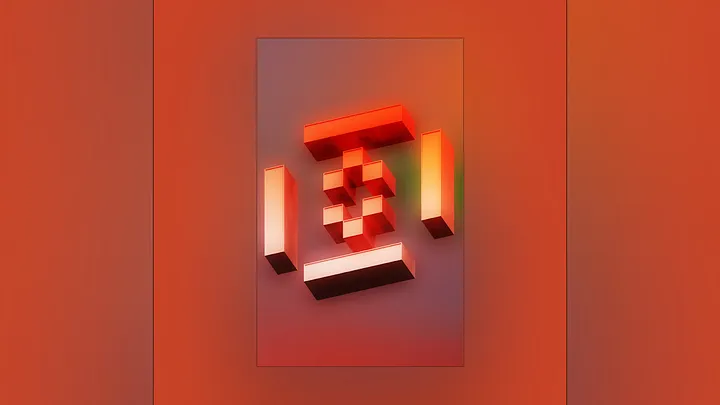- Published on
Catalysis and Kernel: Building the Foundation for 1000 DVNs
- Authors

- Name
- Catalysis Network
- @0xcatalysis
Catalysis and Kernel: Building Universal Decentralized Networks

Blockchain security has always been defined by economic weight — the more assets securing a network, the harder it is to attack. Restaking expands this concept, allowing staked assets to secure multiple decentralized services simultaneously. This shift fundamentally transforms how we think about blockchain security while creating a market for trust.
No longer must each protocol bootstrap its own validator set from scratch. No longer must billions in staked assets sit idle, securing just one network.
Restaking has unlocked over $19B in capital for onchain security — but accessing and deploying this capital remains a multifaceted challenge, involving engineering complexities, market fragmentation, and economic design.
This is where Catalysis and Kernel step in. By combining Kernel's robust DVN (dynamic validation network) infrastructure with Catalysis's unified security layer, we're creating something novel: a world where teams can build universal decentralized networks that can source security from the BNB chain, operate across multiple restaking ecosystems, and scale without friction.
Think of it as the 'Shopify moment' for decentralized services — where what once required months of specialized infrastructure can now be deployed in days.
To understand how we're making this possible, let's look at the unique capabilities each protocol brings to the table.
Introducing Catalysis Network and Kernel
Catalysis Network

Catalysis is the first true abstraction layer for shared security. It enables decentralized networks (DVNs, AVSs, BVSs) to dynamically source and rebalance security across Kernel, Eigenlayer, Symbiotic, SatLayer, and more — without requiring teams to integrate separately with each protocol.
KernelDAO

KernelDAO is a top restaking protocol, with over $2 billion total value locked and live on 10+ chains including Ethereum, BNB Chain, Arbitrum, Optimism, and expanding further. Kernel powers off-chain validation and execution networks through its pioneering Dynamic Validation Network (DVN) architecture. Instead of DVNs needing to manage their own validator coordination and slashing mechanisms, Kernel provides an on-demand, trust-minimized network of operators who handle execution tasks reliably.
Together, we're tackling both sides of the restaking equation:
- Catalysis aggregates and abstracts access to crypto-economic security, while
- Kernel provides the infra for efficient sourcing of security from the BNB Smart Chain.
This combination creates a powerful foundation for the next generation of decentralized services. But to truly understand its impact, we need to examine the problems teams face today.
The Challenges of Building with Shared Security
Restaking is moving us towards a future where security becomes fluid — where the same stake that secures Ethereum can also secure a zero-knowledge proving network, a decentralized sequencer, or a cross-chain bridge — essentially anything in general that requires decentralization.
Effectively, what Flashbots did to MEV, restaking protocols are doing to decentralize security — opening Pandora's box of possibilities.
However, today, there are a bunch of hurdles stopping the restaking space from being adopted at scale by DVN builders and developers:
1. Fragmented Security Markets
Despite billions available in restaked capital, teams can't efficiently access this security. Each restaking protocol operates as an isolated pool, forcing decentralized networks (DVNs, AVSs etc) to integrate with multiple platforms or accept limited security from a single source.
2. Infrastructure Overhead
Building a DVN requires managing complex validator networks, designing their own incentive models, slashing logic, implementing custom consensus mechanisms, and coordinating off-chain execution. Teams spend months on infrastructure instead of their core service.
3. Fractured Developer Experience
Today, the developer experience w.r.t. building decentralized networks is complex and tedious because of the absence of standard tooling for building such services.
4. Operational Complexity
Node operators must maintain separate setups for each restaking platform, leading to inefficient operations and higher costs that ultimately get passed on to DVNs.
5. Security Rebalancing
Without dynamic rebalancing capabilities, DVNs can't optimize their security costs or protect against concentration risks across different restaking protocols.
These challenges have created a bottleneck in the ecosystem. Solving them requires rethinking how DVNs are built and deployed.
Kernel and Catalysis Partnership: What Does This Mean to DVN Development
Kernel and Catalysis are teaming up to turn DVN building into a modular and scalable process. Instead of spending months architecting validator logic, economic security, and slashing mechanisms, teams can focus purely on innovation — whether they're building zk-coprocessors, decentralized AI protocols, data availability layers, or anything that needs decentralization in general.
The impact? More DVNs, launched faster and at lower cost.
More DVNs mean:
- Greater utility and capital efficiency for restaking capital → Stronger incentives for node operators & restakers.
- Higher decentralization → A diverse range of services, reducing reliance on monolithic networks.
- A thriving marketplace for on-chain trust → A self-reinforcing cycle where DVNs drive demand for restaking, and restaking fuels more DVNs.
The partnership between Kernel and Catalysis is a paradigm shift in how decentralized services are built and secured.
Developer Experience of Building DVNs Drastically Improves With This Partnership
By abstracting economic security allocation (Catalysis) and simplifying off-chain execution infrastructure (Kernel), this approach fundamentally redefines the DVN development lifecycle.
Here's a quick overview of the development process:
- Design core logic → Teams focus on their unique service logic, whether it's ZK-proving, AI inference, data availability, or anything that needs decentralization in general.
- Deploy with Catalyst-SDK → Like Cosmos SDK for blockchains, Catalyst-SDK provides production-grade modules for building robust DVNs like modules for staking, consensus and networking.
- Integrate with Kernel → Leverage Kernel's DVN infrastructure for operator management and task execution.
- Source security → Through Catalysis, decentralized services can dynamically access security from the BSC Smart chain. Not only this, through Catalysis, projects can rebalance security from other chains like Ethereum (via Eigenlayer, Symbiotic), Bitcoin (via Babylon, Satlayer), Solana (via Jito) etc.
This modular approach means teams can launch production-ready DVNs in days rather than months, with the flexibility to scale beyond a single pool of economic security.
Use Cases that Catalysis and Kernel Enable
The combination of Kernel's DVNs and Catalysis' shared security abstraction opens the door for a new wave of decentralized applications.
1. Decentralized AI (dAI) Services
Distributed networks for AI model verification, inference, and federated learning. These services enable trustless AI computation while ensuring model integrity and fair reward distribution across participants validating AI tasks.
2. Decentralized Physical Infrastructure (DePIN) Networks
Networks coordinating real-world infrastructure like storage, bandwidth, and compute. Kernel and Catalysis enable efficient operator management and dynamic security allocation for these geographically distributed services.
3. Zero-Knowledge Coprocessors
Specialized networks that generate and verify zero-knowledge proofs at scale. By leveraging shared security, these services can provide cost-effective ZK computation while maintaining decentralization and economic security.
4. Decentralized Markets
Prediction markets, DEXs, and other financial services requiring trust-minimized price feeds and order matching. These decentralized services benefit from dynamic security rebalancing to maintain economic security proportional to value secured.
5. DVN Slashing Insurance
Protection against financial losses from validator slashing events. Kernel verifies slashing conditions accurately while Catalysis dynamically adjusts security across protocols to minimize systemic risks.
6. Arbitrage Bots
Trust-minimized execution of trading strategies across exchanges and chains. Catalysis provides economic security against manipulation, while Kernel validates execution fairness to prevent front-running.
7. Decentralized Points System
Secure attribution of reputation and rewards across on-chain and off-chain actions. Catalysis prevents Sybil attacks through economic security, while Kernel's networks validate real-world interactions.
Each of these services benefits from both Kernel's robust operator network and Catalysis's unified security layer, enabling faster deployment and more efficient operation than previously possible.
The Path Forward: Building a Future with Thousands of DVNs
With billions in capital ready to secure the next generation of decentralized services, the missing piece has been infrastructure that makes building and scaling decentralized networks accessible to all teams.
From AI networks to ZK-coprocessors, these services will demonstrate the power of unified security and standardized infrastructure. And we at Catalysis and Kernel are enabling the next generation of builders to create and scale decentralized services.
Join us in building this future.
